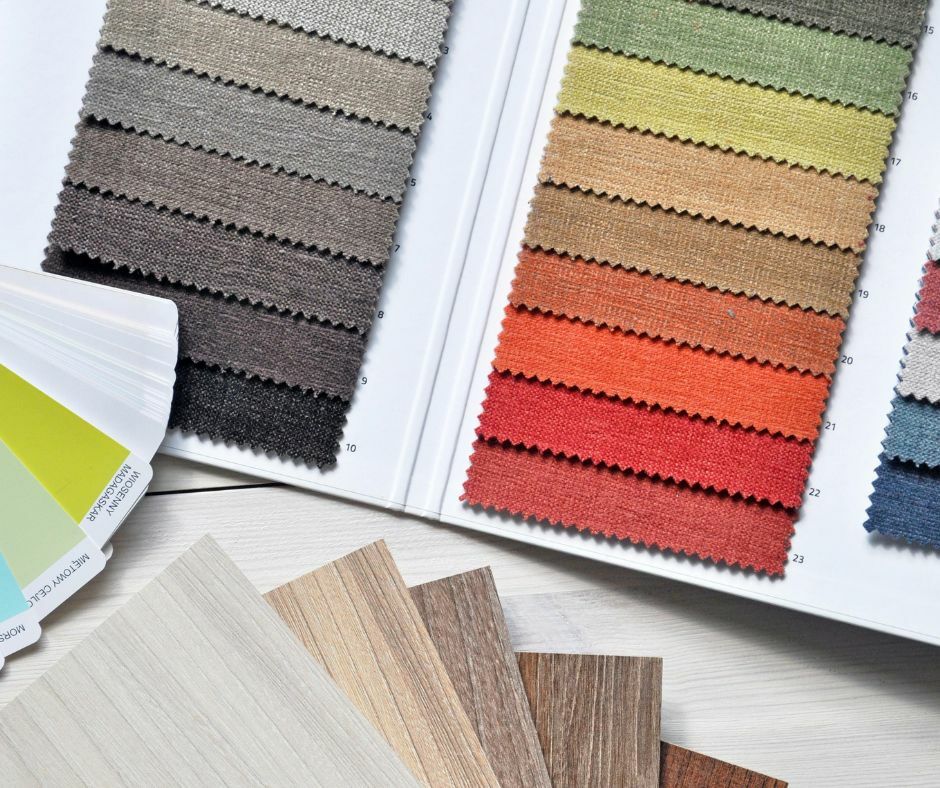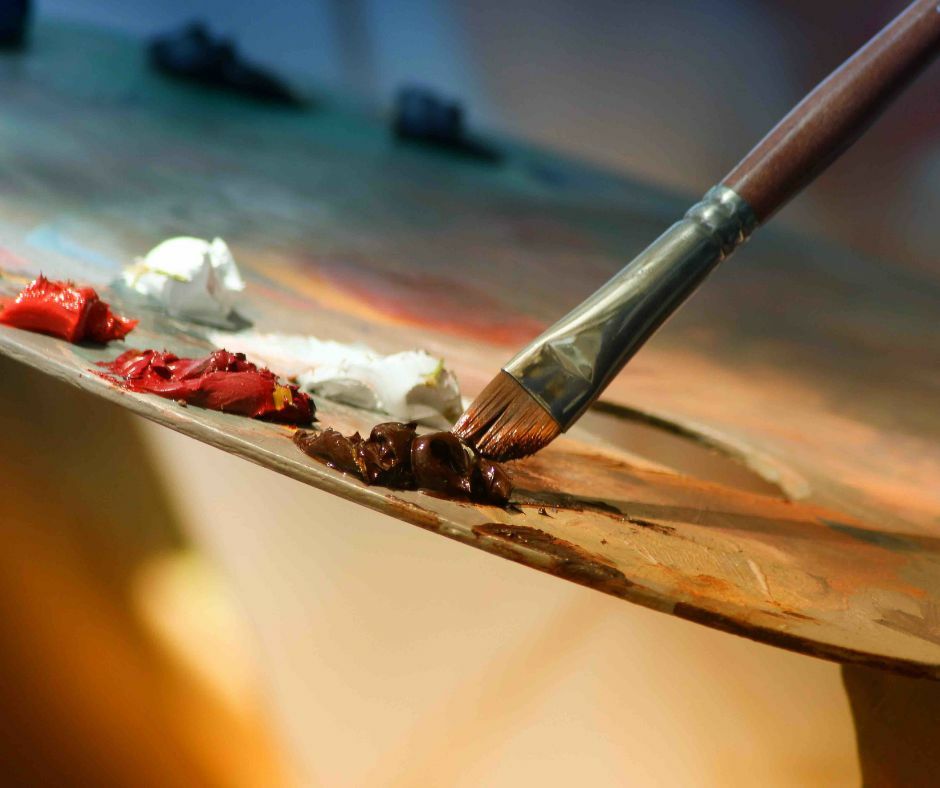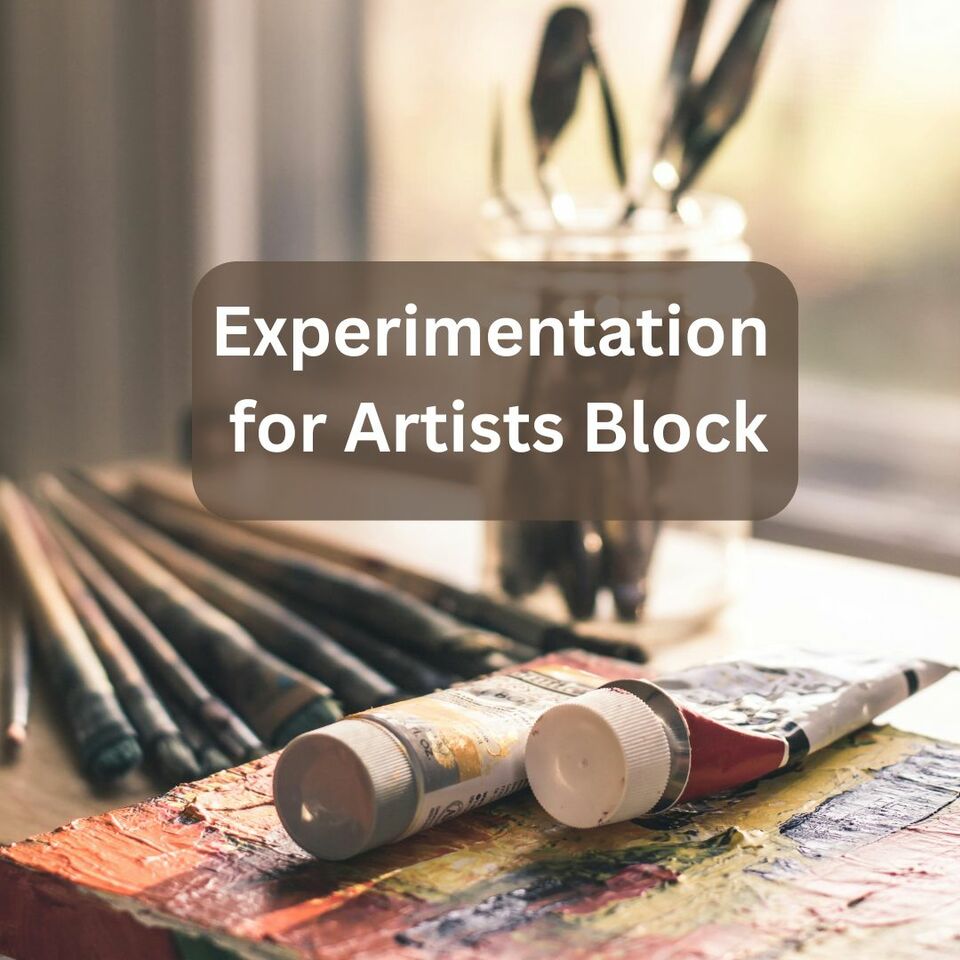How to Be More Experimental As An Artist
As an artist myself I know that artistic experimentation is a vital aspect of any creative journey. It allows artists to break free from familiar patterns, explore new techniques, and ultimately evolve their craft.
Embracing experimental methods can rejuvenate your artistic practice and lead to unexpected breakthroughs.Let's examine several experimental techniques that can inspire and invigorate your work.
From creating detailed colour charts and experimenting with dripping paint effects. To exploring the liberating process of water painting, these approaches offer fresh ways to engage with your art and push the boundaries of your creativity.
Create Colour Charts
As discussed in my article 12 Practical Tips: How to Overcome Artist Block, creating colour charts is an invaluable method for artists, serving as a practical reference and a source of inspiration.
This practice involves painting swatches of the paints you typically use, and it provides several key benefits.
Understanding Colour Properties
Painting colour charts allows you to see how each colour looks when it's dry, which can differ significantly from how it appears wet. This helps you understand the true properties of your paints, including their opacity, vibrancy, and texture.
Exploring Colour Interactions
By creating colour charts, you can experiment with how different colours interact with each other. Mixing and layering paint swatches can reveal surprising and beautiful results, giving you a better sense of how to use your colours effectively in your artwork.
Developing a Personal Palette
A well-made colour chart serves as a personalised palette tailored to your specific preferences and the paints you have on hand. This can be especially useful for quickly selecting colours when working on a piece, ensuring consistency and harmony in your work.
Saving Time and Reducing Waste
Having a reference chart can save you time and reduce paint waste. Instead of testing colours on your canvas and potentially disrupting your composition, you can refer to your chart to make informed decisions about which colours to use.
Enhancing Colour Mixing Skills
Creating colour charts involves mixing various hues, which can improve your colour-mixing skills. This practice helps you become more adept at achieving desired shades and tones, making you a more versatile and confident artist.
Providing a Visual Record
Colour charts act as a visual record of your materials. Over time, they can help you track the paints you've used, how they perform, and which brands and colours you prefer. This can be particularly helpful when replenishing your supplies.
Inspiring New Combinations
Seeing different colours side by side can inspire new and unexpected combinations. As you work with your colour charts, you may discover pairings that you hadn't considered before, sparking fresh ideas for your artwork.

How to Create Effective Colour Charts
- Organise by Hue and Value
- Arrange your colour swatches by hue and value. This makes it easier to see the full range of each colour family and how they relate to one another.
- Label Each Swatch
- Clearly label each swatch with the colour name and brand. This ensures you can quickly identify and replicate colours in the future.
- Include Color Mixtures
- Create charts that include mixed colours. For example, show how a colour looks when mixed with white, black, or other hues. This provides a comprehensive understanding of your paint's capabilities.
- Use Consistent Swatch Sizes
- Keep your swatch sizes consistent for a more uniform and professional-looking chart. This also makes it easier to compare different colours.
- Test on Different Surfaces
- If you work on various surfaces (canvas, paper, wood, etc.), create separate charts for each. Colours can behave differently depending on the surface; having specific charts helps you anticipate these differences.
Creating colour charts is a practical and insightful exercise for any artist. It enhances your understanding of your materials, improves your colour-mixing skills, and provides a handy reference that can streamline your creative process. By investing time in making detailed colour charts, you set yourself up for more efficient and inspired painting sessions.

Experiment with Dripping Paint Effects
Experimenting with dripping paint effects can be an exciting and liberating technique. It adds an element of spontaneity and unpredictability to your work. Using a turkey baster or similar tool to drip paint allows you to apply large amounts of paint simultaneously, creating dynamic and interesting effects.
Embracing Spontaneity
Dripping paint introduces a level of randomness to your artwork, breaking away from controlled and precise techniques. This spontaneity can be refreshing and help you let go of the need for perfection, allowing your creativity to flow freely.
Creating Unique Textures and Patterns
The dripping technique can produce unique textures and patterns that are difficult to achieve with traditional brushwork. As the paint drips and flows, it creates organic shapes and interactions between colours, adding depth and complexity to your piece.
Encouraging Experimentation
Using unconventional tools like a turkey baster encourages experimentation. It's a playful method that invites you to try new things without the pressure of achieving a specific result. This experimentation can lead to unexpected discoveries and creative breakthroughs.
Adding Movement and Energy
Dripping paint can convey a sense of movement and energy in your work. The fluidity and direction of the drips can create a dynamic composition, adding a lively and vibrant quality to your art.
How to Experiment with Dripping Paint Effects
Gather Your Materials
- You'll need a turkey baster, a squirty bottle or similar tool, various paint colours, and a canvas or paper. Ensure your workspace is protected, as this technique can be messy.
Prepare Your Paint
- Dilute your paint with water or a flow medium to achieve the desired consistency. The paint should be fluid enough to flow easily through the baster but not too runny that it loses its colour intensity.
Start Dripping
- Fill the baster with paint and hold it over your canvas. Squeeze gently to release the paint, allowing it to drip and flow naturally. Experiment with different pressures to control the thickness and speed of the drips.
Rotate the Canvas
- After applying the initial drips, rotate the canvas to encourage the paint to flow in different directions. This can create interesting intersections and overlaps, enhancing the overall effect.
Layer and Repeat
- For more complexity, wait for the first layer to dry and then add additional layers of drips. Vary the colours and directions to build up rich, textured layers.
Combine with Other Techniques
- Integrate dripping with other techniques, such as brushwork, splattering, or pouring, to create a multifaceted piece. Combining different methods can add depth and intrigue to your work.
Tips for Effective Dripping Paint Effects
- Control the Flow
- Adjust the baster's angle and height to control the drips' flow and direction. Higher drops create longer, more dramatic drips, while closer drops result in shorter, more controlled effects.
- Use Multiple Colours
- Experiment with multiple colours, either dripping them separately or allowing them to mix on the canvas. The interaction between colours can create beautiful blends and transitions.
- Experiment with Surfaces
- Try dripping paint on different surfaces, such as canvas, paper, or wood. Each surface will interact with the paint differently, offering new possibilities for texture and effect.
- Embrace the Unexpected
- Accept that dripping paint will yield unpredictable results. Embrace the unexpected and let the process guide you rather than trying to control every aspect.
Experimenting with dripping paint effects is a powerful way to inject spontaneity, energy, and unique textures into your artwork. By using tools like a turkey baster, you can explore new techniques, create dynamic compositions, and break free from creative blocks. Embrace the randomness, enjoy the process, and watch as your art takes on a life of its own.

Try Water Painting
Water painting is a unique and freeing technique that differs from traditional watercolour painting. This method involves thoroughly wetting a large sheet of paper and then adding bits of colour, allowing the paint to spread and mingle naturally.
Why this technique is helpful and how to make the most of it:
Embracing Natural Flow
Water painting allows you to embrace the natural flow of water and paint. By letting the colours spread and blend on their own, you relinquish control, fostering a sense of spontaneity and creativity. This process encourages you to trust the medium and enjoy the unexpected results.
Reducing Stress and Pressure
The beauty of water painting lies in its unpredictability. Because you're not trying to control every detail, it reduces the stress and pressure often associated with creating art. This can be particularly helpful when you're experiencing artist's block, as it allows you to engage with the process without worrying about the outcome.
Discovering New Colour Interactions
As the colours spread and mingle on the wet paper, you'll observe unique interactions and blends that you might not achieve with other techniques. This can inspire new colour combinations and ideas for your future work, expanding your creative palette.
Enhancing Fluidity and Movement
Water painting adds a sense of fluidity and movement to your artwork. The flowing colours create organic shapes and gradients that bring a dynamic and lively quality to your piece. This can be especially effective in abstract compositions or backgrounds.
How to Do Water Painting
Prepare Your Materials
- You'll need a large sheet of watercolour paper, water, a brush, and your chosen colours. Ensure your workspace is protected, as this technique can get messy.
Wet the Paper Thoroughly
- Use a large brush or sponge to wet the entire surface of the paper. Make sure it's thoroughly soaked but not pooling with water. The goal is to create a smooth, even layer of moisture.
Add Bits of Colour
- Dip your brush into the paint and gently touch the wet paper. Watch as the colour spreads and mingles naturally. Add more colours, allowing them to blend and interact naturally.
Avoid Control
- Resist the urge to manipulate the paint. Let it do its own thing and observe the beautiful, organic patterns that emerge. This hands-off approach can lead to surprising and delightful results.
Layer and Experiment
- Once the initial layer is dry, you can add more layers of colour, repeating the process. Experiment with different colour combinations and levels of wetness to see how they affect the final outcome.
Tips for Effective Water Painting
- Use High-Quality Paper
- High-quality watercolour paper will handle the water and paint better, preventing warping and allowing the colours to spread more evenly.
- Experiment with Different Brushes
- Try using different brushes, sponges, or even droppers to apply the paint. Each tool will create different effects, adding variety to your work.
- Control the Wetness
- Experiment with varying degrees of wetness. A very wet paper will cause the colours to spread more, while a slightly damp paper will give you more control over the spread.
- Combine with Other Techniques
- Integrate water painting with other techniques, such as detailed brushwork or dry brushing, to add depth and contrast to your piece.
- Allow for Drying Time
- Be patient and allow each layer to dry completely before adding more paint. This prevents muddiness and ensures that the colours remain vibrant and distinct.
Water painting is a liberating and inspiring technique that helps you embrace the natural flow of paint and water. By letting go of control, you can reduce stress, discover new colour interactions, and enhance the fluidity and movement in your artwork.
This method is a beautiful way to overcome creative blocks and enjoy the unpredictable beauty of the creative process. Dive into water painting and let the magic happen on your canvas.
At The End of The Day
Experimenting with different artistic techniques not only enhances your skills but also opens up new avenues for creative expression. By creating colour charts, you gain a deeper understanding of your materials and their interactions, setting a solid foundation for your artistic practice.
Dripping paint effects introduce spontaneity and unique textures, while water painting encourages you to embrace unpredictability and fluidity. Each method offers distinct benefits and can help overcome creative blocks, inspire new ideas, and rejuvenate your passion for art.
Dive into these experimental techniques and let them guide you toward new artistic discoveries and growth.
Posted: Saturday 20 July 2024

